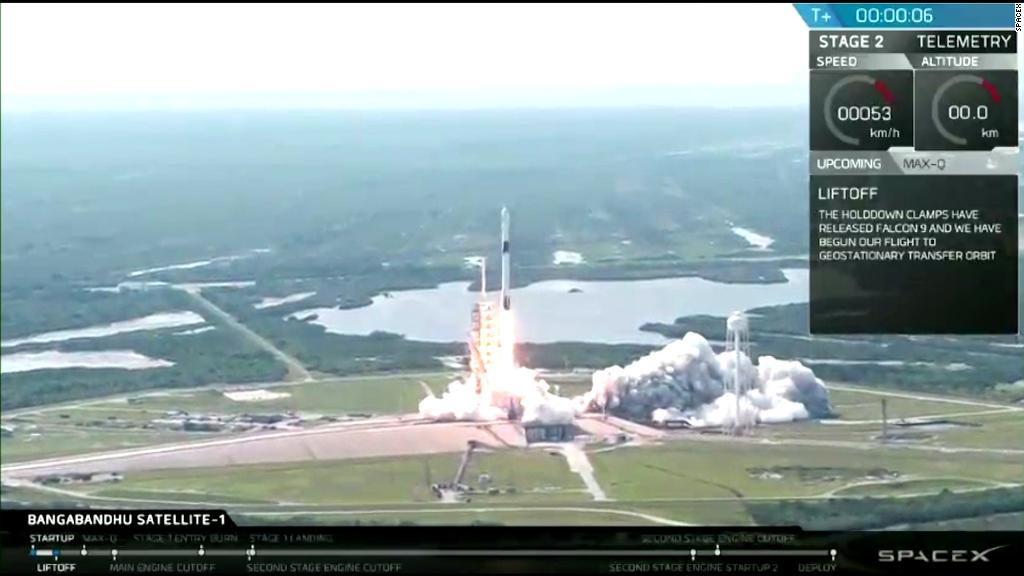
SpaceX missed the mark in its latest money-saving attempt to recover part of a rocket.
After a launch Wednesday morning, the company tried again to land the rocket's multi-million-dollar nose cone on a crew boat in the Pacific Ocean. But SpaceX confirmed it was a miss, and strong winds at sea were a factor.
The core mission was a success. The Falcon 9 rocket deployed ten satellites into orbit for communications company Iridium (IRDM).
The nose cone, or fairing, rests on the top of the rocket, and it acts as a shield for the satellites during launch. Once the rocket is in space, it splits into two and falls away. After most rocket launches, fairings are left to plummet back to Earth where the ocean becomes its graveyard.
SpaceX's goal is to safely recapture the fairing before it crashes into the Pacific, with the hope of refurbishing it for use on a future flight and raising the company's bottom line.
Related: Will Elon Musk's antics hurt his businesses?
Flying, recovering and reusing portions of its rockets is at the core of SpaceX's plan to keep its flights cheaper than competitors. While other firms discard their rockets after a mission, SpaceX has sought to develop hardware that can make multiple trips to space.
The company has already mastered recovery of the first-stage rocket booster. That's the bottom portion of the rocket that gives the rocket it's initial boost at liftoff, and it accounts for roughly 60% of the cost of a new Falcon 9 rocket, CEO Elon Musk has said.
Related: SpaceX's Falcon Heavy lands $130 million military launch contract
SpaceX has invested significantly in its fairing recovery efforts as of late. The hardware on its newer fairings have been outfitted with parafoils, a type of parachute, and an on-board navigation system, that aim to guide it to safety. SpaceX also has a deal with a Louisiana-based ship company to use an oil supply vessel, called Mr. Steven. The ship is outfitted with a giant net that aims to capture the fairing before it hits the ocean surface. The financial terms of that deal have not been disclosed.
The net affixed to Mr. Steven was upgraded since the last attempt to recover a fairing in May. The company said in a tweet the new net is four times larger, aiming to offer the falling fairing a wider target.
SpaceX said the ship encountered strong winds on Wednesday. The crew on board was able to see the fairing's descent but was unable to capture it.
Wednesday's launch was SpaceX's 14th mission so far in 2018. The company hopes to launch 30 times before the end of the year, which would mark the company's busiest year yet by far.

